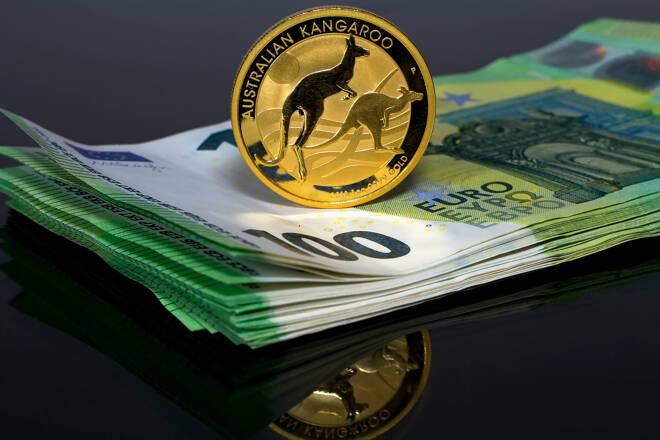Advertisement
Advertisement
AUD to USD Forecast: The PBoC, the Fed, and Sub-$0.65
By:
Key Points:
- The AUD/USD slid by 0.41% on Tuesday, closing the session at $0.65320.
- A less hawkish RBA policy outlook and upbeat US housing sector data left the AUD/USD in negative territory.
- On Wednesday, the PBoC and the Fed will dictate near-term trends for the AUD/USD.
Tuesday Overview of the AUD/USD
The AUD/USD slid by 0.41% on Tuesday. Following a 0.01% slip on Monday, the Australian dollar ended the session at $0.65320. The Australian dollar rose to a high of $0.65639 before falling to a low of $0.65039.
PBoC and Loan Prime Rates in the Spotlight
On Wednesday, the focus turns to the PBoC and loan prime rates. Better-than-expected economic indicators from China could ease pressure on the PBoC to deliver more policy support.
Economists expect the PBoC to leave the 1-year and 5-year loan prime rates at 3.45% and 3.95%, respectively.
A surprise cut could influence buyer appetite for the Aussie dollar. Policy easing would support the Chinese economy and the demand environment.
China accounts for one-third of Australian exports. Australia has a trade-to-GDP ratio of over 50%, with 20% of the workforce in trade-related jobs. Increased demand from China could boost the Australian economy and the Aussie dollar.
There are no economic indicators from Australia for investors to consider on Wednesday. However, discussions between Australian and Chinese officials regarding tariffs on Australian exports need consideration.
US Economic Calendar: The FOMC Projections and Press Conference
On Wednesday, the FOMC interest rate decision, projections, and press conference will be in focus. Recent consumer and producer prices reduced bets on an H1 2024 Fed rate cut. Despite the hotter-than-expected inflation numbers, the markets expect the Fed to leave interest rates at 5.50%.
Nonetheless, uncertainty about the Fed rate path will give the projections and press conference more weightage. The outlook for inflation, the US economy, and the number of Fed cuts in 2024 will move the dial.
In the December FOMC Economic Projections, the median 2024 projection for the Fed Funds Rate was 4.6%. The median FOMC projections for GDP and core inflation for 2024 were 1.4% and 2.4%, respectively. While the FOMC projections for 2024 are significant, forward guidance about an H1 2024 Fed rate cut could be pivotal.
According to the CME Fedwatch Tool, the probability of a 25-basis point June rate cut rose from 50.8% to 55.6% on Tuesday. The markets may see a 25-basis point June rate cut as necessary to achieve a 4.6% interest rate by year end.
Short-Term Forecast
Near-term AUD/USD trends will hinge on Fed forward guidance. Plans for an H2 2024 Fed rate cut would tilt monetary policy divergence toward the US dollar. On Tuesday, the RBA delivered a less hawkish monetary policy stance, leaving the Fed in the driving seat.
AUD/USD Price Action
Daily Chart
The AUD/USD sat below the 50-day and 200-day EMAs, sending the bearish price signals.
An Aussie dollar return to the $0.65500 handle would support a move to the 50-day EMA and the $0.65760 resistance level. A break above the $0.65760 resistance level would bring the 200-day EMA and the $0.66 handle into play.
The PBoC and the Fed warrant investor attention.
Conversely, an AUD/USD break below the $0.65000 handle could give the bears a run at the $0.64582 support level.
Considering the RSI indicator, a 14-period Daily RSI reading of 44.12 suggests an AUD/USD fall to the $0.64582 support level before entering oversold territory.
About the Author
Bob Masonauthor
With over 28 years of experience in the financial industry, Bob has worked with various global rating agencies and multinational banks. Currently he is covering currencies, commodities, alternative asset classes and global equities, focusing mostly on European and Asian markets.
Advertisement
